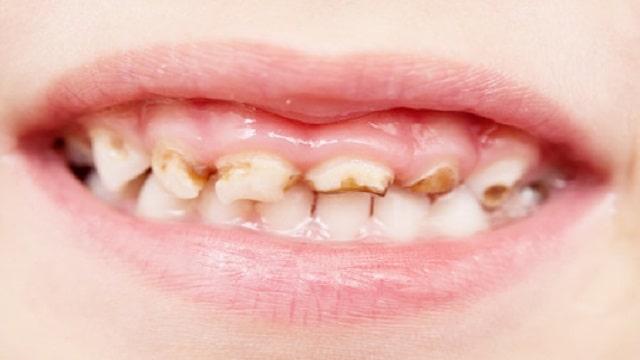
Avascular Necrosis Symptoms, Risk Factors & Treatment | Diseases List A-Z
Avascular necrosis is a degenerative bone condition characterized by the death of bone tissue due to lack of blood supply, causing bone damage, and even bone destruction.
Avascular necrosis can also be called osteonecrosis, aseptic necrosis, or ischemic bone necrosis.
Avascular Necrosis Symptom At the beginning of the process, the symptoms of avascular necrosis are not too noticed by the sufferer.
However, along with the progress of the disease, there are several common symptoms that can be felt, including: Pain when putting weight on the affected bone.
The pain will increase as the bone and surrounding area fuse together.
Limited movement of a joint to the point of not being able to use it at all.
Risk Factors for Avascular Necrosis Some risk factors that can cause someone to suffer from avascular necrosis include: The male gender is more vulnerable than the female.
Generally experienced by people aged 30–60 years.
Have high blood cholesterol levels.
Having a habit of drinking excessive alcohol.
Using steroids long term.
Avascular Necrosis Reason Avascular necrosis occurs due to a lack of blood supply to the bone.
Some conditions that can cause reduced blood supply to the bone include: Injury to a joint or bone, such as a dislocation of a joint, which can also damage the blood vessels around the joint.
Fat that builds up in the blood vessels, blocking small blood vessels, resulting in reduced blood supply to the bones.
This can be triggered by long-term use of corticosteroids or alcoholism.
Certain diseases, such as sickle cell anemia, Gaucher disease, pancreatitis, diabetes, lupus, and HIV/AIDS.
Medical procedures, such as radiotherapy or kidney transplantation, can weaken bones and damage blood vessels.
Diagnosis of Avascular Necrosis The doctor will diagnose avascular necrosis by starting with a complete medical interview related to the course of the disease experienced by the sufferer.
Next, the doctor will perform a complete physical examination focusing on the part of the body that is experiencing abnormalities.
After that, the doctor will ask for several supporting examinations, such as: X-ray, to see changes in bone structure.
MRI or CT scan, to see the condition of the bones in more detail.
Bone scan, which begins with injecting a radioactive substance into a vein.
The radioactive substance will go to the affected bone area and will be captured by a gamma camera when the photo is taken.
Functional bone test, if all imaging test results do not show avascular necrosis.
This examination is done by surgical action to measure the pressure on the diseased bone.
Avascular Necrosis Complications If left untreated, avascular necrosis can worsen over time and eventually, the bone can be destroyed.
Avascular necrosis can also cause the bone to lose its smooth shape, potentially leading to severe arthritis.
Avascular Necrosis Treatment Treatment for avascular necrosis depends on age, the cause of the disease, the part of the bone that is damaged, and the extent of the damage.
In the early stages, doctors will generally provide treatment, such as: Non-steroidal anti-inflammatory drugs (NSAIDs), such as ibuprofen or diclofenac, to reduce inflammation and pain.
Cholesterol-lowering drugs, to help prevent blood vessel blockages that can trigger avascular necrosis.
Blood thinners or anticoagulants, such as warfarin, to prevent blood clots.
Bisphosphonate drugs, such as alendronate, which in some cases can slow the progression of avascular necrosis.
However, this treatment is still controversial, because in some cases bisphosphonates actually trigger avascular necrosis in the jaw bone.
Meanwhile, in avascular necrosis, the advanced stage where the pain becomes more severe, doctors will generally recommend surgical procedures, such as: Bone transplantation, to strengthen damaged bones, by taking healthy bone from another area of the sufferer’s body.
Joint replacement, in joints that are no longer possible to repair.
The sufferer will undergo surgery to replace the damaged joint with an imitation joint made of metal.
Bone core decompression, which is a procedure that involves removing the inner part of the bone to reduce the load on the joint, allowing new, healthy blood vessels to form.
Avascular Necrosis Prevention Some efforts that can be made to prevent this disease include: Maintain cholesterol at normal levels.
Avoid alcohol consumption.
Consult a doctor if you must use corticosteroids long-term.
Clean your teeth and have regular check-ups with your dentist for dental check-ups and treatment, especially for those taking bisphosphonate medication.
When to See a Doctor? If someone has several risk factors and experiences several of the symptoms mentioned above, which are getting worse and do not go away, immediately see an orthopedic specialist for further examination and treatment.
You can also discuss your health symptoms with a doctor.
.
Related Articles
health
Baby Bottle Tooth Decay Symptoms, Risk Factors & Treatment | Diseases List A-Z
October 27, 2024

Baby Bottle Tooth Decay Taking care of teeth from an early age is very important, especially for babies and children.
This is because teeth are needed for their growth and development.
read morehealth
Azoospermia Symptoms, Risk Factors & Treatment | Diseases List A-Z
October 27, 2024

Azoospermia Azoospermia is a condition where a man’s semen does not contain sperm.
This condition is experienced by 1 percent of men worldwide and causes infertility.
read morehealth
Pedapalli: 36 KGBV students fall sick, shifted to hospital
October 27, 2024

Pedapalli: About 36 students of Kasturba Gandhi Balika Vidyalaya, Mutharam mandal, on Sunday fell sick.
All of them were suffering from cough and difficulty breathing.
read more